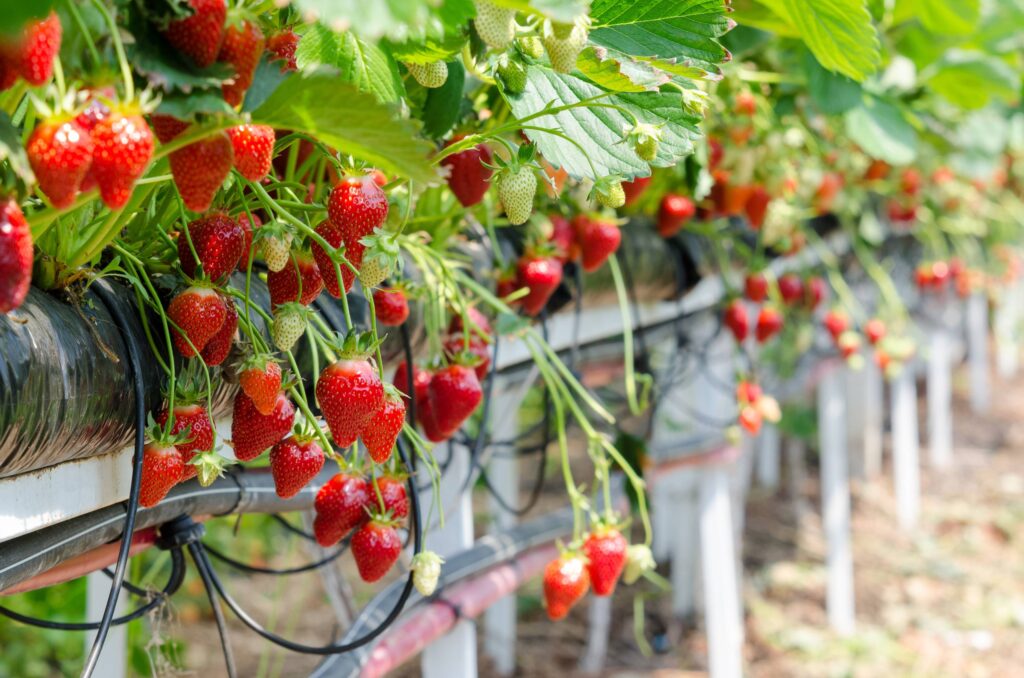How to Extract DNA from a Strawberry

Every biology student learns about DNA, but a hands-on laboratory exercise in which they extract visible amounts of DNA they can manipulate with glass rods or squish between their fingers makes the lectures about DNA in the classroom memorable and meaningful. Modern Biology, Inc. provides mammalian DNA for formal experiments. Still, strawberries are a readily available and easily extractable source of DNA for classroom demonstrations.
What is unique about strawberry DNA?
Biology teachers use strawberries as the source of DNA for classroom demonstrations for two fundamental reasons: there is a lot of easily extractable DNA in a strawberry and strawberries are readily available fresh or frozen any time of year.
Modern strawberries descend from four distinct, diploid species of wild berries. Their ancestor species also hybridized to produce diploid, tetraploid, and hexaploid berries in Europe.
Strawberries are not the only octoploid plants. You could also find abundant octoploid DNA in dahlias and pansies. There are also up to 400 chromosomes in some kinds of fish.
Strawberries, however, are readily available and easy to prepare for extraction. Nearly all students can relate to strawberries.
How does strawberry DNA extraction work?
Unlike some individual biology experiments, extracting strawberry DNA only requires a few common household items:
- Three strawberries (frozen or fresh, but frozen strawberries must be completely thawed before using them in the demonstration)
- Isopropyl (rubbing) alcohol
- Measuring spoons and a measuring cup
- Small mixing bowl
- Water
- Salt
- Liquid dish detergent (for hand-washing dishes)
- Small drinking glass
- Tall drinking glass
- Funnel
- Small glass jar, like a clean baby food jar
- Toothpick or bamboo skewer
Start by chilling the rubbing alcohol in the freezer.
Make your extraction liquid by mixing one-third cup (80 ml) of water, one tablespoon (15 ml) of dishwashing detergent, and one-half teaspoon (3 grams) of salt. Set this aside, too.
You can ask students why the extraction liquid contains detergent.
Line the funnel with the cheesecloth. Make sure the cheesecloth completely covers the funnel. Place the funnel into the tall drinking glass (which should be empty when you place the funnel into it).
Remove any leaves from the strawberries.
Next comes the fun part. Place the strawberries into the plastic bag. Press to remove any air. Seal the bag and squish the berries for three minutes until they become mush.
Add three tablespoons (45 ml) of the extraction liquid you made earlier to the bag. Press to get the air out of the bag, reseal, and squish the bag between your fingers for one minute.
You can ask students how they think the strawberries will look after being mixed with the detergent and then ask them how the berries look 60 seconds later.
Now, empty the bag onto the cheesecloth you put in the funnel. Let it drain until only the pulp remains. Ask students how the filtrate looks now.
Remove the cheesecloth and the funnel and pour the filtrate from the tall glass into the small jar until it is one-quarter full.
Measure out one half-cup (120 ml) of chilled rubbing alcohol.
Tilt the small glass jar and slowly pour chilled rubbing alcohol over the filtrate, taking care not to mix them.
The rubbing alcohol will precipitate the DNA, so gooey, squishy, white strings of DNA begin to appear. When enough DNA is visible, students can extract it with toothpicks, a wooden skewer, or a glass stirring rod.
Notice where the DNA forms in the container with the two mixtures.
A single strand of DNA is too small to view with the naked eye, but precipitates of DNA from a solution yield a product that can be seen and touched.
How do you test the DNA of a strawberry?
There are a number of ways to transform this demonstration into an experiment.
- Change the proportions of the ingredients in the extraction liquid. See if the experiment yields more or less DNA (after accounting for differences in the weights of berries).
- Test whether ripe strawberries and not-yet-ripe strawberries contain similar amounts of DNA, once again, in terms of the weight of strawberries used in the test.
- Macerate strawberry leaves and try other fruits and cereals to extend the comparison.
This hands-on experiment prepares students for more advanced lab work with electrophoresis. It is a simple demonstration that transforms DFNA from an abstraction to a part of every student’s understanding of their world.
Modern Biology, Inc. is the supplier of choice for over 80,000 teachers in the United States. We are available on weekdays to answer your questions. Contact us at (765) 446-4220 or email us today!
 Due to Customs restrictions, we only accept orders from educational institutions within the Continental United States, Alaska or Hawaii.
Due to Customs restrictions, we only accept orders from educational institutions within the Continental United States, Alaska or Hawaii.